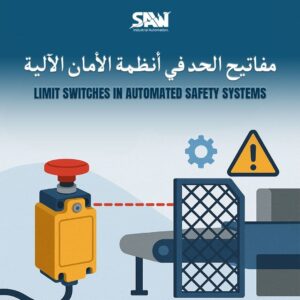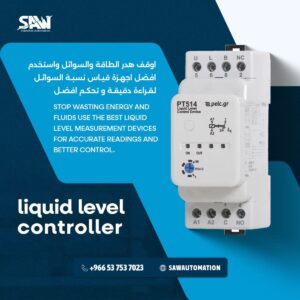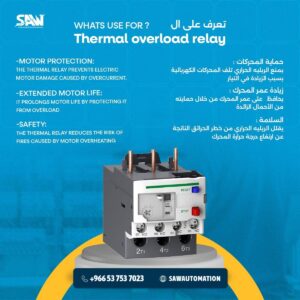Hydraulics vs. Pneumatics: which is more Suitable for your Factory?

Hydraulics vs. Pneumatics: Which is More Suitable for Your Factory?
Saw automation & electrical parts
If you’re in the process of establishing a new factory or upgrading your current operations, there’s one question you’ll inevitably face: Should you choose hydraulic or pneumatic systems? Both are powerful technologies used to operate machinery, but each has distinctly different advantages and disadvantages.
Your location plays a crucial role. Whether your factory is in Riyadh, a processing facility in Dammam, or an operational site in the middle of the desert, your choice will affect several aspects such as performance, maintenance, safety, and cost. Let’s clarify the matter in a practical and simplified manner, away from technical complexity, so you can make the right decision for your factory.
Understanding the Basics First
Before comparing, we need to understand the difference.
Hydraulic systems rely on pressurized fluids (usually oil) to produce motion. They are often used in heavy equipment such as excavators, presses, and industrial cranes.
Pneumatic systems, on the other hand, use compressed air or gas to move parts. They are commonly found in production lines, packaging machines, and even dental chairs.
Both systems mechanically move machines, but the method of operation significantly affects performance and application.
Power and Torque: Hydraulics Excel
If your operations require high force, hydraulics is the better choice. Because the fluid used is nearly incompressible, all pressure is directly converted into motion. This gives you constant force and high control—ideal for heavy lifting or metal forming.
As for pneumatics, due to the compressibility of air, it’s difficult to compete with hydraulics in raw power. It’s preferred for lighter applications.
Speed and Simplicity: Pneumatics Shine Here
If you’re looking for speed and ease of installation and operation, pneumatics is an excellent choice. It’s quick to respond, easy to install, and takes up less space. Most of its components are lightweight and flexibly assembled, making it suitable for repetitive tasks such as product transfer or operating small robotic arms.
Moreover, air is free. The operating cost of pneumatic systems is lower in terms of fluids compared to hydraulics. True, you need a compressor and filtration system, but the operating environment is generally cleaner and easier to maintain.
Precision and Control: Details Make the Difference
In some applications, precision is everything. Hydraulic systems provide precise control of speed and position because fluid flow can be easily regulated. That’s why you see them used in CNC machines, plastic molds, or processes that require high accuracy.
Pneumatics, on the other hand, are less precise, especially when loads change. Because air pressure changes easily, and there’s a slight delay in response. While you can add feedback control systems, this increases cost and complexity.
Maintenance and Reliability
Here’s the point that concerns every factory supervisor: downtime.
Hydraulics, despite their strength, are prone to leaks. Oil leaks cause mess and can be a safety hazard or fire risk. Regular checks of seals, pressure, and oil quality are needed.
Pneumatics are cleaner and require less maintenance. There’s no oil leakage, and most problems are with filters, water in the line, or worn seals—all of which are easy to deal with.
But don’t forget, compressed air isn’t always as “clean” as we think. If not properly filtered, it can carry moisture or particles that damage internal components. Therefore, maintenance remains necessary even with pneumatics.
System Cost: Now and in the Future
Let’s talk frankly about money.
Pneumatics are often cheaper initially. Parts are less expensive, and installation is faster. But beware: energy consumption can drive up costs—compressed air is inefficient in energy use, and the compressor can account for a large portion of the electricity bill.
Hydraulics cost more at the start—pumps, tanks, valves, strong hoses—but are more energy-efficient for heavy tasks. In the long run, they can be more economical if you have operations that consistently require high power.
Space and Operating Environment
Consider where the system will operate. Hydraulics are usually larger. They need oil tanks, return lines, and power units. In tight factories or mobile machines, this can be a constraint.
Pneumatics are smaller in size. Their components are light and easy to install. And in an environment like Saudi Arabia, especially in desert areas, pneumatics handle temperature fluctuations better. Hydraulics, however, don’t like high temperatures, and the system’s oil can be affected or its viscosity can change.
Safety and Security
Safety cannot be ignored.
Hydraulic systems operate at very high pressures (sometimes thousands of PSI), and a burst hose or damaged seal can cause injury or equipment damage.
Pneumatics, however, typically operate at lower pressures (around 100 PSI). While it can still cause harm, it’s safer in open environments or those with human interaction.
Most importantly, pneumatics pose less risk in terms of fire or contamination, making them an ideal choice for industries such as electronics, food, and pharmaceuticals.
So, Which is Better for You?
The honest answer: It depends on your factory’s needs.
Choose hydraulics if you need high power, precise control, and work in a heavy industrial environment.
Choose pneumatics if you focus on speed, simplicity, clean environment, or light automation.
Don’t forget to ask yourself:
How much downtime can you afford?
Is energy cost a significant factor for you?
Do you need a system that’s expandable or has integrated installation?
In many modern factories in Saudi Arabia, the trend is to use hybrid systems: hydraulics for heavy tasks, and pneumatics for fast and auxiliary functions.
Conclusion
Choosing between hydraulics and pneumatics is not just a technical decision—it’s a strategic one. The best system is the one that serves your production line, aligns with your budget, and fits your future vision.
Talk to your engineers, take a tour of the production line, and think about how you want your factory to evolve.
And if you need advice? Consult with automation experts who understand the specific challenges in your field—especially in the Gulf, where heat, dust, and energy efficiency are essential elements that can’t be ignored.




